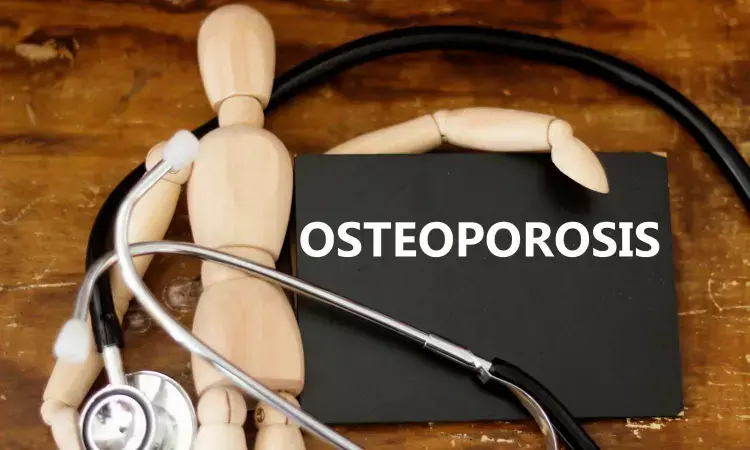- Home
- Medical news & Guidelines
- Anesthesiology
- Cardiology and CTVS
- Critical Care
- Dentistry
- Dermatology
- Diabetes and Endocrinology
- ENT
- Gastroenterology
- Medicine
- Nephrology
- Neurology
- Obstretics-Gynaecology
- Oncology
- Ophthalmology
- Orthopaedics
- Pediatrics-Neonatology
- Psychiatry
- Pulmonology
- Radiology
- Surgery
- Urology
- Laboratory Medicine
- Diet
- Nursing
- Paramedical
- Physiotherapy
- Health news
- Fact Check
- Bone Health Fact Check
- Brain Health Fact Check
- Cancer Related Fact Check
- Child Care Fact Check
- Dental and oral health fact check
- Diabetes and metabolic health fact check
- Diet and Nutrition Fact Check
- Eye and ENT Care Fact Check
- Fitness fact check
- Gut health fact check
- Heart health fact check
- Kidney health fact check
- Medical education fact check
- Men's health fact check
- Respiratory fact check
- Skin and hair care fact check
- Vaccine and Immunization fact check
- Women's health fact check
- AYUSH
- State News
- Andaman and Nicobar Islands
- Andhra Pradesh
- Arunachal Pradesh
- Assam
- Bihar
- Chandigarh
- Chattisgarh
- Dadra and Nagar Haveli
- Daman and Diu
- Delhi
- Goa
- Gujarat
- Haryana
- Himachal Pradesh
- Jammu & Kashmir
- Jharkhand
- Karnataka
- Kerala
- Ladakh
- Lakshadweep
- Madhya Pradesh
- Maharashtra
- Manipur
- Meghalaya
- Mizoram
- Nagaland
- Odisha
- Puducherry
- Punjab
- Rajasthan
- Sikkim
- Tamil Nadu
- Telangana
- Tripura
- Uttar Pradesh
- Uttrakhand
- West Bengal
- Medical Education
- Industry
Air pollution linked with bone damage in postmenopausal women: Lancet

USA: Among postmenopausal women, higher levels of air pollutants are linked with bone damage, particularly on the lumbar spine, according to a recent study in the peer-reviewed journal eClinicalMedicine.
The findings highlight exposure to nitrogen oxides as a leading contributor to bone loss in postmenopausal women, expanding previous discoveries of air pollution-related bone damage.
The cohort study showed that the effects were most evident on the lumbar spine, with nitrous oxides twice as damaging to the area than seen with normal ageing.
Previous studies on individual pollutants have suggested adverse effects on bone mineral density, osteoporosis risk, and fractures in older individuals. The new study is the first to explore the connection between air pollution and bone mineral density, specifically in postmenopausal women, and the first to explore the effects of air pollution mixtures on bone outcomes.
The researchers analyzed data collected through the Women’s Health Initiative study, an ethnically diverse cohort of 161,808 postmenopausal women. They estimated exposures of air pollution (PM10, NO, NO2, and SO2) based on participants’ home addresses. They measured bone mineral density (BMD; whole-body, total hip, femoral neck, and lumbar spine) at enrollment at follow-up at year one, year three, and year six using dual-energy X-ray absorptiometry.
The magnitude of the effects of nitrogen oxides on lumbar spine BMD would amount to 1.22 percent annual reductions-nearly double the annual effects of age on any of the anatomical sites evaluated. These effects are believed to happen through bone cell death by way of oxidative damage and other mechanisms.
“Our findings confirm that poor air quality may be a risk factor for bone loss, independent of socioeconomic or demographic factors. For the first time, we have evidence that nitrogen oxides, in particular, are a major contributor to bone damage and that the lumbar spine is one of the most susceptible sites of this damage,” says study first author Diddier Prada, MD, PhD, associate research scientist in the Department of Environmental Health Sciences at Columbia Mailman School of Public Health.
“Improvements in air pollution exposure, particularly nitrogen oxides, will reduce bone damage in postmenopausal women, prevent bone fractures, and reduce the health cost burden associated with osteoporosis among postmenopausal women. Further efforts should focus on detecting those at higher risk of air pollution-related bone damage,” says lead author Andrea Baccarelli, MD, PhD, chair of the Department of Environmental Health Sciences at Columbia Mailman School of Public Health.
Car and truck exhaust is a major source of nitrous oxides, as are the emissions from electrical power generation plants.
Approximately 2.1 million osteoporosis-related bone fractures occur annually, resulting in up to $20.3 billion in annual direct health costs. Osteoporosis impacts women more than men, with 80 percent of the estimated 10 million Americans with osteoporosis being women. Postmenopausal women are at higher risk, with one in two women over 50 experiencing a bone fracture because of osteoporosis.
Previously, Columbia researchers showed that long-term air pollution exposure reduces BMD and increases bone fracture risk in later life. Subsequently, these findings have been confirmed in multiple human studies.
Reference:
Diddier Prada, Carolyn J. Crandall, Allison Kupsco, Marianthi-Anna Kioumourtzoglou, James D. Stewart, Duanping Liao, Jeff D. Yanosky, Andrea Ramirez, Jean Wactawski-Wende, Yike Shen, Gary Miller, Iuliana Ionita-Laza, Eric A. Whitsel, Andrea A. Baccarelli Published:February 14, 2023 DOI:https://doi.org/10.1016/j.eclinm.2023.101864
Dr Kamal Kant Kohli-MBBS, DTCD- a chest specialist with more than 30 years of practice and a flair for writing clinical articles, Dr Kamal Kant Kohli joined Medical Dialogues as a Chief Editor of Medical News. Besides writing articles, as an editor, he proofreads and verifies all the medical content published on Medical Dialogues including those coming from journals, studies,medical conferences,guidelines etc. Email: drkohli@medicaldialogues.in. Contact no. 011-43720751


